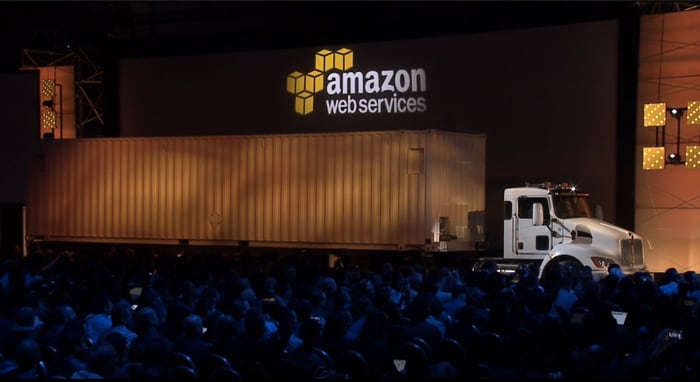Introduction
A few days ago, AWS announced in a blog post that they would be providing free DTO (Data Transfer Out) of AWS, when moving data to another cloud provider or to an on-premises data center. This is a pretty big deal, because one of the common concerns from companies looking to adopt the cloud, is the expense of moving their data out, causing vendor lock-in.
In this article, we will explore details on transferring data in and out of AWS, some of the more recent regulatory changes, and the potential business impact.
Updates
Update: 03/17/2024 - On March 13, 2024, Microsoft announced that Azure would be following suit and allowing free egress for customers leaving Azure when taking their data out of the Azure infrastructure via the internet to switch to another cloud provider or an on-premises data center. This would be on top of the first 100GB/month free egress data already provided.
Update: 03/26/2024 - It was pointed out that AWS Snowmobile is no longer available. Recently, the web page for the service has been removed, and redirects to the AWS Snowball page. I received confirmation from AWS that the service was discontinued, and was provided with this statement:
AWS is always innovating on behalf of customers, which means we must sometimes make the decision to pivot when we believe our resources should be invested elsewhere to better serve customers. For that reason, we no longer offer AWS Snowmobile.
Data Transfer In
Typically, there is no charge for inbound data transfer to AWS. The challenge becomes how to get the data into AWS quickly and efficiently.
If a small amount of data needs to be transferred, it can be uploaded directly via the internet, for example to an S3 bucket.
For larger datasets, or to set up a larger job to connect between an on-premises data center and AWS, the two most common options are Site-to-Site VPN and Direct Connect, both which come with a cost. AWS DataSync can also be set up to copy between on-premises and AWS, to automate moving data to a number of AWS services.
For extremely large datasets that cannot be transferred over the internet, or in an environment where there is no consistent network connectivity, the AWS Snow Family is available. This allows for some edge computing to collect and process data, and move it to the AWS cloud by physically shipping the device to AWS.
AWS Snowcone has an HDD and SSD device type, which can transfer 8-14TB of data securely on a device small enough to put in a backpack.
AWS Snowball has a number of devices optimized for edge computing and data transfer. The service allows you to order a ruggedized device that can hold multiple terrabytes to petabytes of data, to transfer to AWS.
You would set up a Snowball Edge Job to define how to import the data into S3. Once the data is copied to the Snowball, it can be shipped back to the proper AWS datacenter to be uploaded and complete the job.
If you have extremely large amounts of data to transfer, such as hundreds of petabytes or into exabytes, AWS Snowmobile can move up to 100PB at once via a ruggedized shipping container. The ruggedized shipping container is tamper-resistant, water-resistant, temperature controlled, and GPS-tracked. The service was announced in 2016, and one of the trucks shown during a presentation that year at AWS re-Invent:
https://www.youtube.com/watch?v=8vQmTZTq7nw
For all of the above methods, the charges would be for the method of data transfer, but the actual data transfer into AWS would cost $0.00/GB.
This CNBC piece details all of the AWS Snow family options in much more detail:
https://www.youtube.com/watch?v=H3_ZqnqLyVo
Data Transfer Out
Many of the methods for transferring data into AWS can also be used to transfer data out. The catch is that until recently, you would also be charged per GB of data transferred out. For example, see this AWS blog post from 2010, when outbound data transfer prices were reduced. Companies would pay $0.08 - $0.15 per GB transferred out per month. This would mean that for companies that have extremely large data sets in AWS, getting that data out would be prohibitively expensive, which could lead to some companies being locked into the platform.
The example above is for data transfer from EC2 out to the internet, and is available on the pricing page.
In 2021, AWS increased the free tier to make the first 100GB of data per month transferred out to the internet free.
Changing The Game
In January 2024, Google Cloud announced in a blog post that they would be eliminating data transfer fees when moving off Google Cloud. This would allow customers to use Google Cloud without having to worry about a gigantic cloud exit data transfer bill. Customers do have to apply for free data transfer when exiting Google Cloud, but knowing the policy definitely could be reassuring.
Since 2022, the European Union has been revising The European Data Act, and the final text was published in December 2023. The European Data Act will become fully effective in September 2025. The act specifies:
The Data Act also improves the conditions under which businesses and consumers can use cloud and edge services in the EU. It becomes easier to move data and applications (from private photo archives to entire business administrations) from one provider to another without incurring any costs, because of new contractual obligations that the proposal presents for cloud providers, and a new standardisation framework for data and cloud interoperability.
Part of the text includes a provision for a self-regulatory code of conduct for facilitating the switching of data processing services and the porting of data. Many Cloud providers have signed on to the SWIPO (Switching Cloud Providers and Porting Data) group, including members of the Cloud Infrastructure Services Providers In Europe (CISPE).
In the most recent blog article from AWS, they refer to the waiver on data transfer following the direction set by the European Data Act, and being available to all AWS customers around the world, and from any AWS region.
Interestingly, Microsoft has declared adherence to a SWIPO Code of Conduct, but the pricing details for Microsoft Azure still indicate the first 100GB of Internet Egress is free, but charged per GB after that. I was not able to find an exception policy when exiting their cloud to another provider or moving back to on-premises. It will be interesting to see if they follow suit with their competitors.
Conclusion
It appears that the European Data Act is working to level the playing field among cloud providers, and making it less costly for companies to port their data out, removing one of the barriers that would cause "lock-in" with specific providers. It will be interesting to see how other cloud providers and services react to the new pricing and upcoming regulations, and if they will follow suit.
Resources
- AWS Blog Post - Free data transfer out to internet when moving out of AWS
- AWS Blog Post - Introducing AWS Snowball
- AWS FAQ - Migrate Petabyte Scale Data
- AWS Snowmobile FAQ
- European Data Act
- SWIPO (Switching Cloud Providers and Porting Data) Stakeholder Group
- Cloud Infrastructure Services Providers in Europe









Top comments (1)
Worth to read